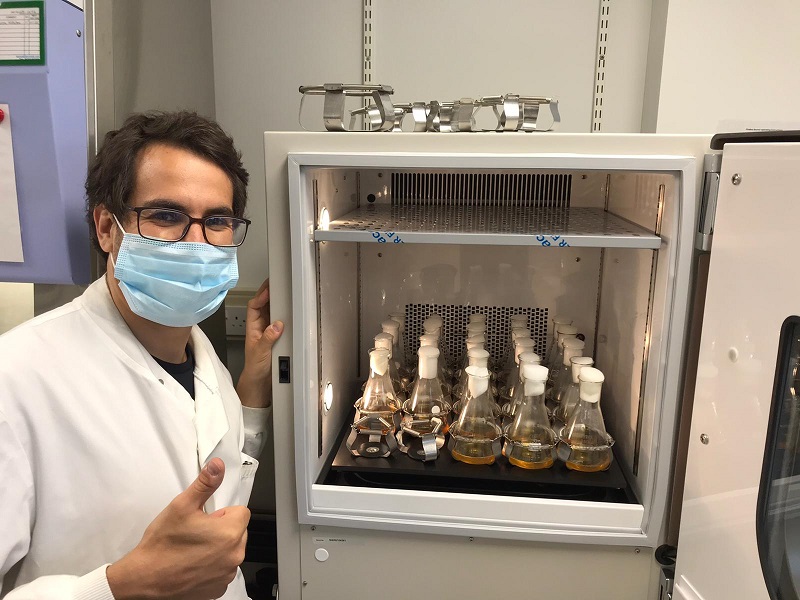PS Webinar Series: The structure of rice blast effector AVR-Pii in complex with host Exo70 defines a new effector/target interface and a novel family of blast effectors
Pathogens and pests as diverse as bacteria, oomycetes, fungi, nematodes and aphids are sophisticated manipulators of their hosts.
Speakers
Event series
Content navigation
Description

Abstract - Pathogens and pests as diverse as bacteria, oomycetes, fungi, nematodes and aphids are sophisticated manipulators of their hosts. They do so by secreting an array of proteins, termed effectors, that target host proteins and modulate cell processes to enable colonization. Understanding effector functions can inform the development of new strategies to improve resistance against some of the most devastating crop diseases. Importantly, effectors have also emerged as molecular probes that can lead to unravel novel processes in plant immunity. Therefore, understanding the biochemical and structural basis of effector activities has become a major conceptual paradigm in molecular plant pathology.
Exocytosis is increasingly recognized as having an important role in plant-microbe interactions, both in pathogenesis and symbiosis. A subunit of the plant exocyst complex, named Exo70, is involved in pathogen virulence and is monitored by the immune system to detect invading pathogens. Furthermore, Exo70 proteins associate with RIN4/NOI containing proteins, which are also well-known targets of pathogen effectors. Interestingly, both Exo70 and NOI domains are frequently integrated into NLR immune receptors, presumably acting as baits for pathogen detection. To date, knowledge of how effectors perturb exocyst function is still limited. The rice blast pathogen effector AVR-Pii binds allelic rice Exo70F2 and Exo70F3 with high specificity. AVR-Pii association with Exo70F3 is detected by the NLR pair Pii, via an integrated NOI domain. Here, we dissected the molecular basis of AVR-Pii interaction with rice Exo70s. By obtaining the crystal structure of AVR-Pii in complex with Exo70F2, we defined a new effector/target interface and obtained mechanistic understanding of AVR-Pii binding to Exo70s. Furthermore, AVR-Pii structure revealed a new fold for a blast effector, allowing us to perform a structure-informed search in blast genomes to identify a novel family of putative effectors.
Biography - I studied Biology and Biochemistry at the University of Sevilla (Spain). After a few research internships in Germany and the UK, I started as a pre-doc in the lab of Sophien Kamoun at The Sainsbury Laboratory in Norwich. In 2015, I moved to a rotation PhD program in the lab of Mark Banfield at John Innes Centre, where I investigated the mechanistic basis of how paired NLR receptors recognize effectors from the blast pathogen using a combination of biophysics and structural biology. After a short postdoc working on blast effectors in the lab of Nick Talbot, I recently joined the Vienna International Postdoctoral Program VIP2 to study how macromolecular complexes functionally diversify during evolution.
juan.Concepcion@gmi.oeaw.ac.at
Location
When: Mar 24, 2021 09:00 AM Canberra, Melbourne, Sydney
Topic: Dr. Juan Carlos De La Concepcion Webinar
Please click the link below to join the webinar:
https://anu.zoom.us/j/89055779117?pwd=eVdHeG1UT3lMN3BwZENkb0tvQ1d4dz09
Webinar ID: 890 5577 9117
Passcode: 855541
Or One tap mobile :
Australia: +61861193900,,89055779117#,,,,*855541# or +61871501149,,89055779117#,,,,*855541#
Or Telephone:
Dial(for higher quality, dial a number based on your current location):
Australia: +61 8 6119 3900 or +61 8 7150 1149 or +61 2 8015 6011 or +61 3 7018 2005 or +61 7 3185 3730
International numbers available: https://anu.zoom.us/u/kdTZVhtB0i
Or an H.323/SIP room system:
H.323: zoom.aarnet.edu.au
SIP: 89055779117@zoom.aarnet.edu.au




